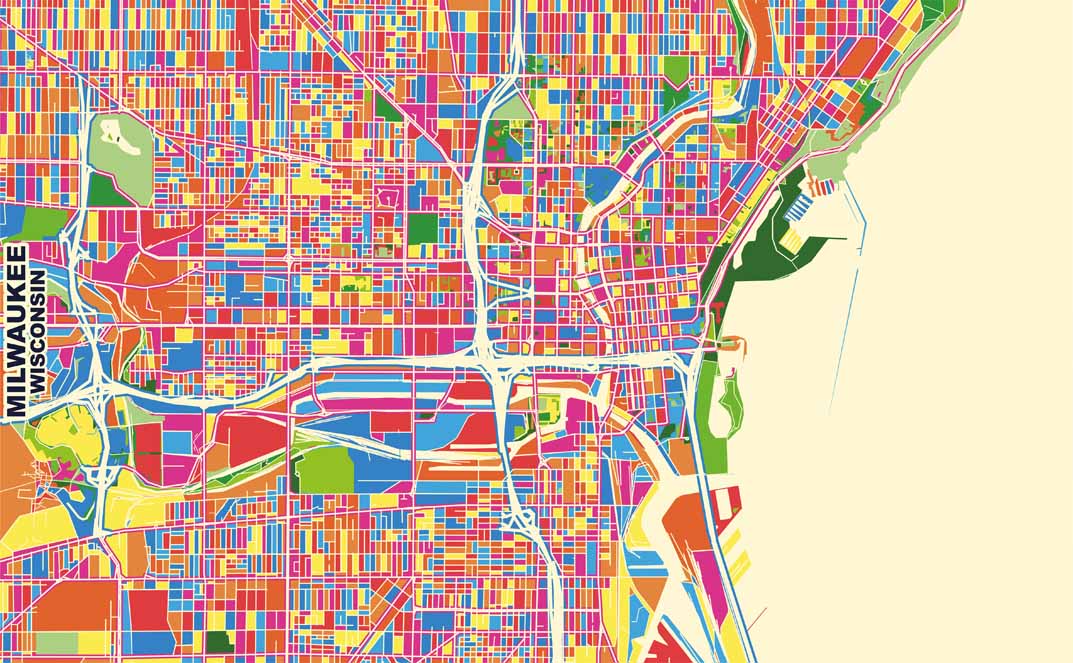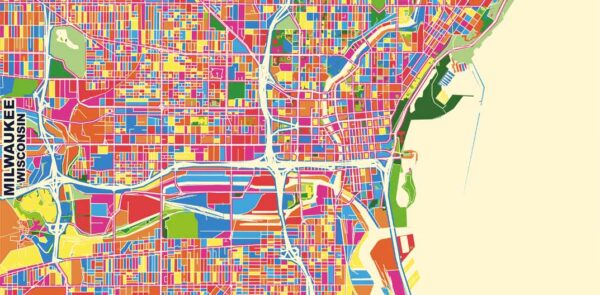
Jump to a section:
Milwaukee, Wisconsin, is a city that merges rich traditions—like beer brewing and lakefront festivals—with fresh entrepreneurial energy and a growing startup scene. Whether you’re near the Historic Third Ward, in Bay View, or out in Wauwatosa, targeting local customers online has never been more crucial. But how do you break through the noise when potential shoppers or clients are busy and quick to search for “best brunch near me” or “affordable auto repair in Milwaukee” at a moment’s notice? A Pay-Per-Click (PPC) campaign with local targeting can be your direct line to these high-intent consumers.
At Emulent, we’ve guided a variety of Milwaukee-based businesses—ranging from craft breweries near Walker’s Point to cozy boutiques on Brady Street—toward PPC strategies that capture attention at the right moment. In this article, we’ll walk you through setting up and optimizing your first local PPC campaign in Milwaukee, from picking hyper-local keywords referencing the city’s unique neighborhoods to crafting geo-specific ad copy that resonates with Brew City culture. Whether you’re brand new to digital ads or refining an existing approach, these insights will help you connect with the folks who matter most in Milwaukee’s thriving market.
Why Local PPC Matters in Milwaukee
Emulent’s Perspective on a Dynamic Midwestern Hub
As Wisconsin’s largest city, Milwaukee is home to diverse demographics—families long established in neighborhoods like Bay View or Riverwest, young professionals drawn by new development downtown, and suburban communities stretching into the greater metro area. Many residents celebrate local brands, enjoy neighborhood street festivals, and take pride in the city’s unique beer heritage and cultural events. Running a local PPC campaign ensures that when these individuals search for solutions—be it “best fish fry near me” or “Milwaukee plumber 24/7”—they’ll see your business first, especially if you carefully target the neighborhoods you serve.
Key Observations and Stats
- Neighborhood Loyalty: From the East Side to Bay View, Milwaukee has pockets where local pride runs high. People often prefer businesses referencing their immediate neighborhood or that reflect the area’s character.
- Year-Round Events: Between Summerfest, local brewery celebrations, and community festivals (like Polish Fest or Bastille Days), huge crowds come out. PPC ads can capture event-related queries if you geo-target precisely or add event-themed keywords.
- Mobile Dominance: As with most mid-sized to large cities, a majority of local searches in Milwaukee come from phones—making it vital that your ads and landing pages load fast and provide immediate calls to action.
Why Local PPC is a Game-Changer Here
- Captures High-Intent Searches: You pay only when someone clicks, typically someone already looking for your product or service in Milwaukee. This approach targets people genuinely ready to purchase or book.
- Reaches Specific Neighborhoods: Instead of blasting all of southeastern Wisconsin, you can zero in on particular ZIP codes or areas, ensuring your budget goes where it’s most relevant.
- Taps into Local Identity: Ads referencing Milwaukee’s breweries, Lake Michigan lakefront, or local sports pride can differentiate you from generic, out-of-town competitors.
Identifying Milwaukee-Centric Keywords
Emulent’s Method for Local Keyword Discovery
Your first step is figuring out which search terms Milwaukee residents actually type into Google. Simply adding “Milwaukee” to your product name is a start, but you’ll want to dig deeper. Think about neighborhood references, local slang, or seasonal terms (e.g., “Milwaukee fish fry Fridays” in Lent or “beer garden near me” in summer). By tailoring your keyword sets to these local quirks, you’ll surface for the most relevant searchers at exactly the right moment.
Keyword Research Sources
- Google’s Keyword Planner: Enter broad terms like “Milwaukee pizza,” “brewery tours in Milwaukee,” “Milwaukee daycare,” etc. Check volumes, related suggestions, and potential costs.
- Local Forums and Groups: Whether it’s Facebook groups (like “Milwaukee Foodies” or “Bay View Neighborhood”), watch how people describe places or what terms they use to ask for recommendations.
- Competitor Observations: Scan other local brands’ Google ads or site meta descriptions. Borrow ideas—while ensuring your approach remains unique.
Refining Your Keyword List
- Neighborhood References: “pizza in Bay View,” “best coffee near Downtown Milwaukee,” “hair salon in Wauwatosa.” This specificity leads to a more qualified audience.
- Event Tie-Ins: If you sell local crafts, incorporate “Milwaukee Art Fair” or “Local festival vendors” if that traffic might bring leads.
- Seasonal or Cultural Terms: “Milwaukee fish fry,” “beer garden,” “lakefront fireworks,” “Brew City gifts.” These reflect local traditions and can spike at certain times of the year.
Emulent’s Example:
We helped a local ice cream shop near the East Side target phrases like “custard in Milwaukee,” “East Side ice cream shop,” and “locally made dairy free treats.” After implementing these niche keywords, their ad engagement improved by nearly 30%, as they served the exact queries of locals wanting specialty sweets in that part of the city.
Setting Geo-Targeting to Pinpoint Milwaukee Shoppers
Emulent’s Approach to Location Settings
One of PPC’s big perks is geofencing—telling Google Ads or other platforms, “Show my ads only in certain ZIP codes or radius.” For a city the size of Milwaukee, this can significantly reduce wasteful clicks. For instance, if you only serve the East Side or you mainly target suburban families in Brookfield, you can tailor your ads to appear only to those neighborhoods. This ensures your budget is spent on the people who can realistically become customers.
Geo-Targeting Best Practices
- Search by Specific ZIP Codes or Neighborhoods: If your café is in Bay View, you might limit ads to the Bay View and surrounding areas, preventing clicks from folks too far away to care.
- Use Radius Targeting: For a mobile service (like a plumber or florist offering delivery), set a comfortable mile radius from your store or headquarters. Google Ads can display your ads only to users within that circle.
- Exclude Irrelevant Regions: If you see unproductive clicks from outside your service zone (like Racine or West Bend), specifically exclude them in your campaign’s location settings.
Analyzing and Adjusting Location Data
- Google Ads’ Location Report: After a few weeks, see which areas (ZIP codes, neighborhoods) yield the most conversions or leads. Increase bids or spend on those top-performers.
- Event-Specific Expansions: If Summerfest or a big sports event is coming up near Downtown, you might temporarily add or expand your radius around those event locations to reach visitors or day-trippers.
- Negative Location Exclusions: Keep refining. If certain pockets never convert, or if your store is inaccessible from certain spots, exclude them to save your budget.
Emulent’s Local Insight:
A roofing company near Glendale tested a citywide approach. Over time, they discovered their best leads hailed from North Milwaukee suburbs. By restricting ads primarily to Glendale, Shorewood, and Whitefish Bay, they cut cost per lead in half and reinvested savings into a slightly higher daily budget—enabling them to capture more prime traffic.
Crafting Ad Copy that Speaks Brew City’s Language
Emulent’s Recommendation on Localized Messaging
Milwaukee residents take pride in their breweries, sports teams (Brewers, Bucks, Packers mania extends here, too), local cuisine (think cheese curds, custard), and distinctive culture. Weaving references to these local elements into your ad copy helps your brand stand out from big-box chains or faceless online retailers. A well-placed mention of “Milwaukee tradition,” “Lakefront views,” or “family-run since 1985 in Bay View” triggers recognition and loyalty for those who identify with these iconic markers.
Elements of Effective Local Ad Copy
- Headlines that Call Out Milwaukee or Neighborhoods: Example: “Family-Owned in Bay View—Fresh Bakery Daily” or “Discover Locally Crafted Gifts in the Third Ward.”
- Body Text that Highlights Values: Show your business’s ties to the city—like using local dairy, referencing a local philanthropic cause, or hosting events that reflect Brew City’s spirit.
- Clear CTA: “Call Now for a Free Quote,” “Reserve Your Table Today,” or “Shop Online for Curbside Pickup in Shorewood.” Ensure that once someone clicks, they know the next immediate step.
Ad Extensions to Strengthen Your Pitch
- Location Extensions: Display your address, so mobile users can easily map your store if they’re close by and short on time.
- Call Extensions: Good for service providers wanting immediate phone leads (like HVAC or plumbers).
- Sitelinks: Direct links to “Order Online,” “Our Story,” or “Holiday Specials” can quickly guide potential customers to relevant info.
Emulent’s Local Insight:
We helped a small cheese shop near Walker’s Point shift from generic copy (“Try Our Great Selection of Gourmet Cheeses!”) to local references (“Taste Wisconsin’s Finest in Walker’s Point—Family-Owned Since 1990”). Their click-through rate jumped about 25% after adding those references to neighborhood and local heritage.
Picking a Bidding Strategy and Budget That Works for You
Emulent’s Take on Managing Your PPC Investment
From coffee shops in the East Side to medical clinics in West Allis, local businesses often operate on lean budgets. That’s why controlling ad spend is paramount. A thoughtful bidding strategy helps you appear frequently enough for top keywords but avoids blowing through your daily limit by midday. As you gather results, you can scale successful parts of your campaign or trim underperformers to keep cost per acquisition (CPA) at a profitable level.
Common Bidding Methods
- Manual CPC: Good for novices who want control, but requires hands-on tinkering.
- Enhanced CPC (ECPC): Lets Google slightly tweak your manual bids if it predicts better odds of conversion.
- Target CPA/ROAS: More automated. You tell Google your ideal cost per acquisition or return on ad spend, and it adjusts bids to try meeting that goal. Typically best once you’ve collected baseline data.
Budget-Management Tips
- Start with a Modest Daily Budget: Maybe \$20–\$50 if you’re a small local brand. Watch CPC (cost per click) and conversions for a couple of weeks.
- Review Conversion Data Often: Track which keywords or times of day yield leads or purchases. Increase bids or budget for top-performers; cut or refine where you see minimal results.
- Test Ad Scheduling: If you run a breakfast café, ads after 2 p.m. might be wasted. For after-work services, maybe you want to appear heavily from 4 p.m. to 8 p.m. on weekdays. Align your budget with your peak windows.
Emulent’s Local Insight:
A window repair company near Glendale started with manual CPC. After they compiled enough data (which keywords worked best, typical CPC, etc.), they switched to a target CPA approach, telling Google to aim for \$20 cost per lead. They refined negative keywords and dayparting, eventually achieving a predictable \$18–\$22 cost per lead that matched their profit margins neatly.
Matching Ads to Relevant Landing Pages That Convert Locals
Emulent’s Insights on the Post-Click Experience
Even if your ad is on-point, a disjointed or slow-loading landing page can sabotage the entire effort. Milwaukee customers who clicked looking for a “Farm-to-Table Brunch in Bay View” expect exactly that message reiterated on the next screen. If they see a generic homepage with no mention of local farm partnerships or brunch details, confusion sets in and they bounce. Conversely, a page that continues the local story and showcases easy calls to action is poised to capture their interest—and potentially their dollars.
What Milwaukee-Friendly Landing Pages Need
- Local Continuity: Echo the ad’s promise—if it references “Brady Street,” the landing page should mention or show pictures of your Brady Street location.
- Mobile Optimization: With so many searches happening on phones, a page that loads quickly and features large, easy-to-tap buttons fosters better conversion rates.
- Clear, Immediate CTA: “Order Now,” “Request a Quote,” “Book a Table,” “Call Us”—whatever the next step is, it should be front and center, requiring minimal scrolling.
- Local Validation: Possibly a map snippet (like “We’re only 5 minutes from the Milwaukee Art Museum!”) or trust symbols (“Featured in OnMilwaukee.com,” local Yelp star rating). Such references build authenticity.
Encouraging the Desired Action
- Highlight Unique Selling Points: If you run an eco-friendly store, illustrate your local, sustainable angle. If you’re a plumber, mention “Serving Milwaukee for 20 years—24/7 emergency calls.”
- Use Quality Photos: Show interior shots or staff images that exude a welcoming vibe. Milwaukee folks often appreciate a brand’s local face or real employees over stock images.
- Offer Incentives or Testimonials: A short line from a satisfied local customer can tip someone from “maybe” to “yes.” Pair that with a small discount or free item for first-time clients, if feasible.
Emulent’s Local Insight:
A vintage clothing shop near the Third Ward realized their traffic soared from an ad promising “Rare Vintage Finds in Milwaukee’s Third Ward,” but conversions lagged on their general homepage. We built a specific landing page featuring rotating images of the shop’s interior, a Google map snippet, and a “claim 10% off your first purchase” CTA. Conversions jumped by 35%, turning curious clicks into actual store visits.
Tracking Performance and Staying Engaged with the Brew City Community
Emulent’s Recommendation on Long-Term Refinement
Running a local PPC campaign isn’t a “set it and forget it” tactic—it thrives on iterative improvement. By reviewing conversion metrics (like cost per lead, total sales from ad clicks, or in-store visits after ad interactions), you can see which parts of your strategy succeed, which neighborhoods or times produce fruitful leads, and what ad copy resonates best with Milwaukee’s varied population. Meanwhile, sustaining offline connections—like sponsoring local events, networking with neighboring shops, or consistently posting on local social groups—lets your brand identity stay visible beyond the digital realm, reinforcing your authenticity in the community.
Key Performance Steps
- Install Conversion Tracking in Google Ads: Mark calls, form fills, or e-commerce sales as “conversions” so you know exactly which keywords or ads spark real results.
- Review Search Term Reports: Identify irrelevant clicks to add as negative keywords. Also spot new phrases that might hint at additional ad groups or expansions.
- Adjust and Expand Gradually: If a certain ad group yields strong ROI, increase bids or daily budgets. If certain ZIP codes never convert, exclude them to concentrate spend on better locales.
Community Connection Strategies
- Attend Local Business Meetups: Groups like Young Professionals of Milwaukee or local chamber events keep you updated on neighborhood happenings that might sync with your marketing themes.
- Participate in Seasonal Fests: Summerfest might be huge, but smaller events—like street fairs or craft markets—can also deliver direct brand engagements and potential new leads. Integrate these events into your PPC messaging or short-term radius expansions.
- Sustain a Social Presence: Milwaukee-based hashtags (#MKE, #MilwaukeeBusiness) or local foodie pages can be channels to share behind-the-scenes tidbits, new product drops, or community stories that tie into your online advertising efforts.
Emulent’s Local Insight:
An auto detailer near Bay View noticed a slump in midweek bookings. After discovering “car detailing near me” still soared in weekday searches, they boosted ad budgets specifically Tuesday–Thursday and posted a “Bay View Midweek Wash Special.” The synergy with local hashtags and a targeted PPC tweak lifted midweek appointments by 40%—a previously untapped timeslot now brimming with customers.
Making the Most of Milwaukee’s Local PPC Potential
From the downtown RiverWalk to the suburban edges, Milwaukee’s communities are ready to support homegrown brands—so long as they appear exactly when residents need them, stand out with local references, and follow through on authenticity. A carefully tailored PPC campaign can place your brand front and center in search results for those “I need it now” moments. By layering in location-focused keywords, precise geo-targeting, local-flavored ad copy, and well-structured landing pages, you’ll capture the hearts of Brew City’s residents who want to buy close to home.
Here’s Emulent’s Action Checklist:
- Research Milwaukee-Specific Keywords: Combine your offerings with references to neighborhoods, local events, or seasonal traditions that matter to Milwaukeeans.
- Geo-Target for Relevance: Pinpoint ZIP codes or a radius that matches your service area. Use location reports to prune or expand effectively.
- Local-Focused Ad Copy: Weave in mentions of Lake Michigan, sports pride (Brewers, Bucks), or local treats (cheese, custard). Authentic references resonate with potential patrons.
- Choose a Balanced Bidding Method: Start with manual or enhanced CPC, monitor results, then refine your approach or adopt automated bidding once you see patterns in your data.
- Optimize Landing Pages: If your ad touts “Riverwest’s best coffee,” show pictures, store hours, a short local backstory, and an easy “buy now” or “order ahead” button.
- Track, Adjust, and Integrate: Regularly analyze conversions. Foster your brand presence offline—sponsoring neighborhood get-togethers or forging cross-promotions with other local players.
By following these steps and continuously engaging with Milwaukee’s tight-knit neighborhoods, you can create digital campaigns that speak directly to the city’s consumer hearts. If you need guidance—selecting the right keywords, shaping geo-targeted ads, or analyzing campaign performance—our Emulent team is here to steer your local PPC journey. Let’s bring your brand out of the shadows and into the spotlight of Milwaukee’s thriving local scene.

